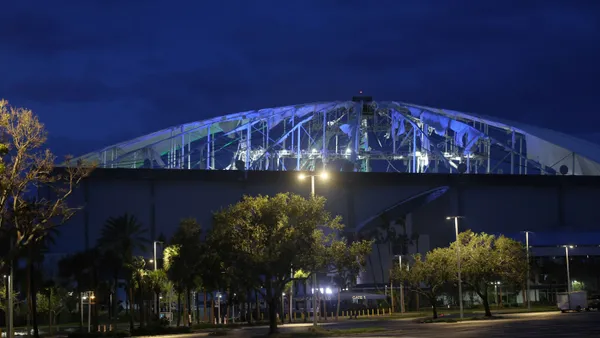Dive Brief:
- Developers have broken ground on a 46-story, 499-foot-tall downtown mixed-use tower in Fort Lauderdale, FL, which will be the city's tallest building once complete, according to the South Florida Business Journal.
- The 100 Las Olas skyscraper will feature a 238-room Hyatt Centric hotel, 8,500 square feet of ground-floor retail space and 121 condominiums that range in price from $800,000 to more than $2 million.
- The project, which is slated for a late 2019 opening, was designed by SB Architects, with Simeone Deary Design Group and Decorators Unlimited providing the interior plan. The general contractor is South Florida-based Kast Construction.
Dive Insight:
The 100 Las Olas development is an ambitious project, particularly because other developers, in Florida and elsewhere, have reported a glut in the luxury condominium market and have even shelved their projects in order to wait out the market.
The Related Group postponed construction of its Auberge Residences & Spa Miami project after disappointing presales in August of last year. Only 15% of the building's 298 units sold, and Related executives said a break in the market might not be all bad. The project was scheduled to break ground in 2017, but that could be delayed to 2018.
However, developers aren't the only ones concerned about a potential glut of luxury towers. The Federal Reserve, which raised interest rates a few weeks ago, has expressed some apprehension about the commercial lending practices that are funding these skyscrapers in an environment that could indicate oversaturation in certain areas of the country. Federal officials could use future interest rate hikes to throw some cold water on the market if they feel it has become too overheated, according to a Bloomberg report.
Despite the worries and words of caution from the Fed, construction and development (C&D) loans still outpaced all other lending categories in 2016, leading officials to keep a tighter eye on lenders. It's worth noting, however, that C&D lending is at nearly a third of what it was in the run-up to the Great Recession.













